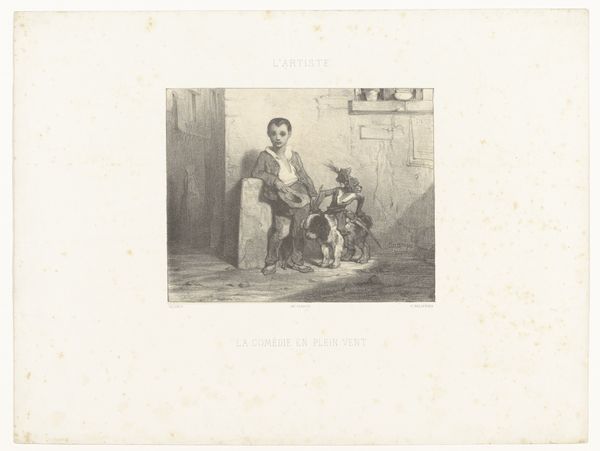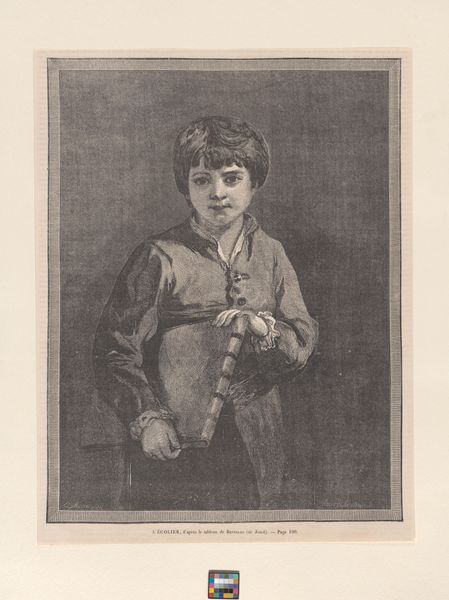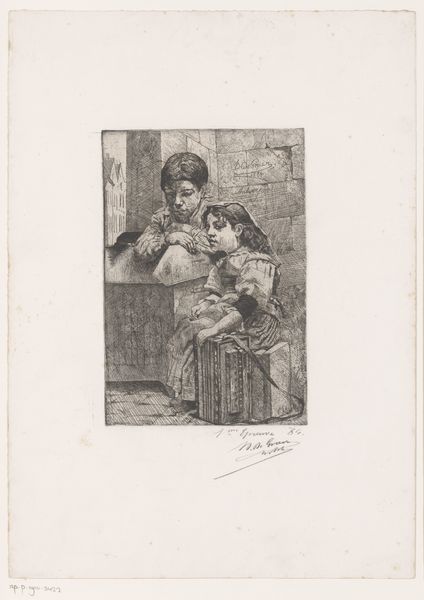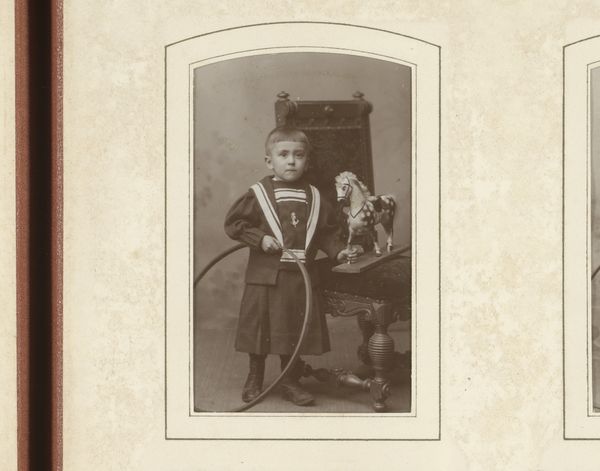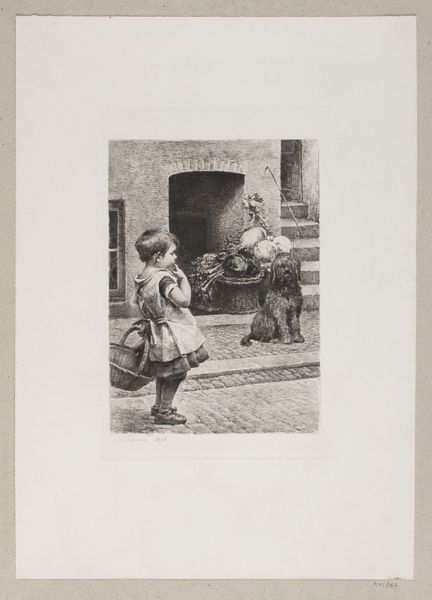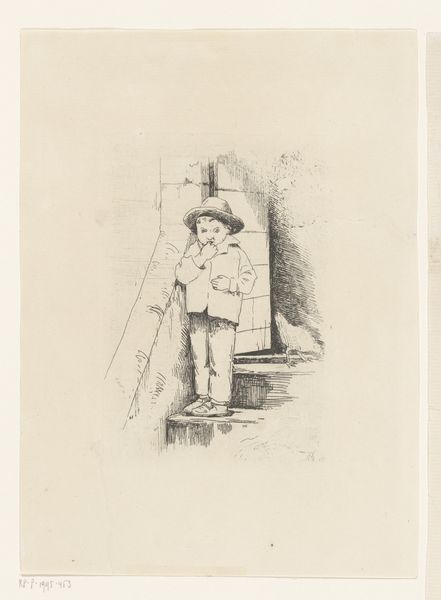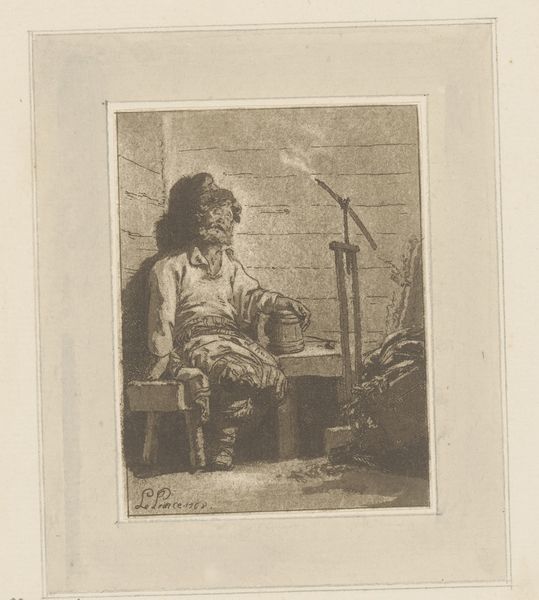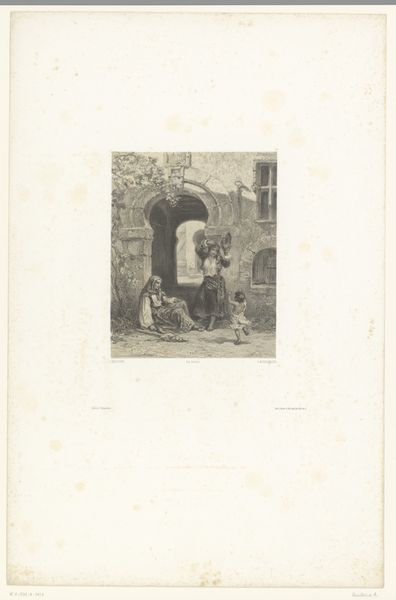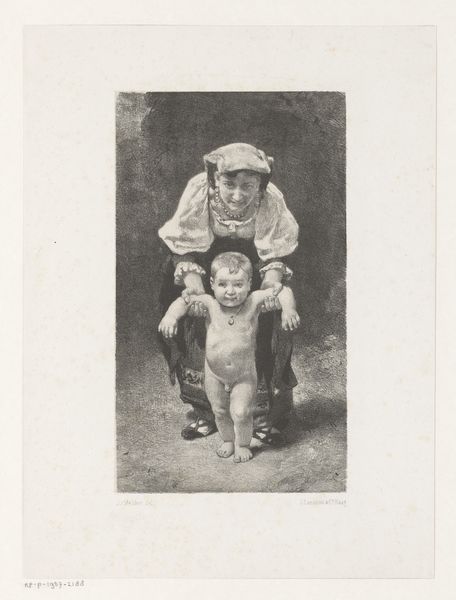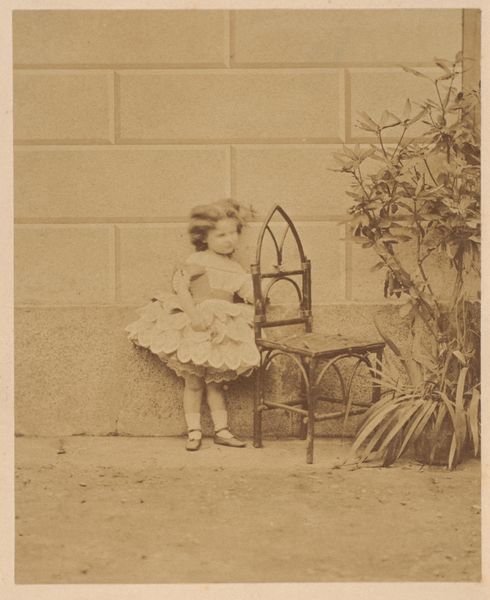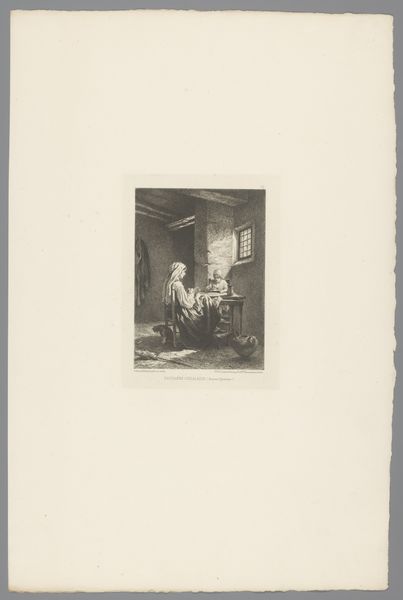
drawing, graphite
#
portrait
#
drawing
#
landscape
#
graphite
#
genre-painting
#
realism
Dimensions: height 360 mm, width 269 mm
Copyright: Rijks Museum: Open Domain
Editor: Here we have Frederik Hendrik Weissenbruch's "Boy Sitting on Steps in Front of a Door", made sometime between 1847 and 1865. It's a graphite drawing, and it's currently held at the Rijksmuseum. The boy is so absorbed in what he’s doing... what do you see in this work? Curator: Well, right away, it's not just the boy, is it? It's that threshold he occupies – the step, the doorway. He's on the verge of something. Look at how Weissenbruch plays with light; it almost sculpts the scene. What is the boy contemplating? Is it about to open the door to some new adventure? And tell me, does that light suggest dawn or dusk to you? It shapes the boy’s face in such a curious way. Editor: Dusk, maybe? There's a stillness. A contemplation. But I'm curious about what you said – a "threshold". That suggests it's more than a simple portrait. Curator: Precisely! And that's where the fun begins, isn't it? I find it charming that Weissenbruch invites us into this intimate space, blurring the lines between observation and reflection. See the genre-painting, which tells us to pause, and consider these tender times when we are not quite in one place or the next. And you might notice that boy and building have equal attention in the composition... interesting, huh? What happens in his town? Editor: I hadn't thought about it that way. Now that you mention the building, it does seem grand. This is definitely a window into another time! Curator: Indeed, and art, in its generous nature, often prompts us to re-evaluate what is "home." What might your idea of home, in this moment, look like? Editor: Wow, I’ll be thinking about that for a while. It really puts a different spin on such a realistic, almost mundane scene. Curator: Exactly! It shows that beauty often exists where we least expect to find it. And so the art achieves one purpose.
Comments
No comments
Be the first to comment and join the conversation on the ultimate creative platform.
